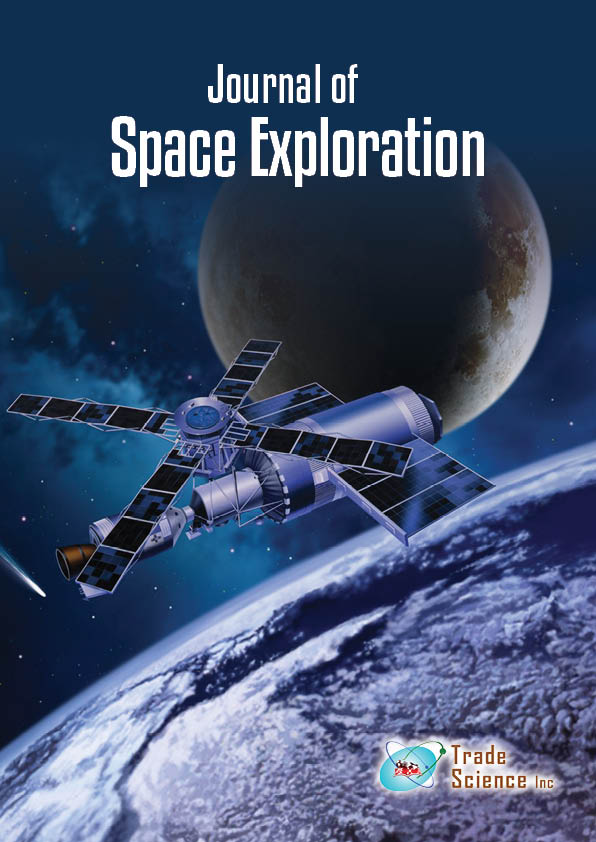Perspective
, Volume: 14( 1)Unraveling the Enigmatic Passage of Entropy through the Black Hole Singularity in Active Galaxies
- *Correspondence:
- Milan D. NeAiA
Department of Space Exploration, Megatrend University, Beograd, Serbia
E-mail: univerzumkaorelativnanula@gmail.com
Received: July 14, 2023, Manuscript No. TSSE-23-106269; Editor assigned: July 17, 2023, PreQC No. TSSE-23-106269 (PQ); Reviewed: July 31, 2023, QC No. TSSE-23-106269; Revised: January 15, 2025, Manuscript No. TSSE-23-106269 (R); Published: January 22, 2025, DOI. 10.37532/2320-6756.2025.14(1).384
Citation: NeAiA MD. Unraveling the Enigmatic Passage of Entropy Through the Black Hole Singularity in Active Galaxies. J Space Explor. 2025;14(1):384.
Abstract
Black holes have long captivated the imagination of scientists and the general public alike. These cosmic beasts, formed from the gravitational collapse of massive stars, possess an extraordinary gravitational pull from which not even light can escape. While the existence and properties of black holes have been extensively studied, their innermost regions, specifically the singularity, remain shrouded in mystery.
Keywords
Galaxies; Space-time; Laser Interferometer Space Antenna (LISA); Cosmic beasts; Active Galactic Nuclei (AGNs)
Introduction
Black holes have long captivated the imagination of scientists and the general public alike. These cosmic beasts, formed from the gravitational collapse of massive stars, possess an extraordinary gravitational pull from which not even light can escape. While the existence and properties of black holes have been extensively studied, their innermost regions, specifically the singularity, remain shrouded in mystery. Active galaxies, characterized by the presence of an accreting supermassive black hole at their centers, provide a unique opportunity to investigate the passage of entropy through the black hole singularity. In this article, we delve into the current understanding and ongoing research surrounding this fascinating phenomenon.
The nature of active galaxies: Active galaxies, or AGNs (Active Galactic Nuclei), are cosmic powerhouses that emit prodigious amounts of energy across various wavelengths. They are fueled by the accretion of matter onto a supermassive black hole residing in their centers. The immense gravitational pull of these black holes causes the surrounding material to spiral inward, forming a rotating disk known as an accretion disk. As matter falls toward the black hole, it releases copious amounts of energy, leading to the emergence of powerful jets and luminous emissions.
The black hole singularity: At the heart of a black hole lies the singularity, a region of space-time where gravity becomes infinitely strong and classical physics breaks down. It is a point of infinite density, often visualized as a gravitational well. While our current understanding of physics fails to describe the conditions within the singularity, the principles of thermodynamics and information theory provide insights into the behavior of entropy within this extreme environment.
Description
Entropy and its passage through the singularity: Entropy, a measure of disorder or randomness, plays a fundamental role in understanding the behavior of energy and information in physical systems. In the context of black holes, the concept of entropy is intricately linked to the "information paradox." According to classical thermodynamics, information cannot be destroyed, but black holes seemingly violate this principle by devouring matter and information.
However, pioneering work by Stephen Hawking in the 1970’s demonstrated that black holes have a temperature and emit radiation, known as Hawking radiation. This discovery provided a groundbreaking connection between black holes and entropy. It implied that black holes possess entropy proportional to their surface area, referred to as the Bekenstein-Hawking entropy. Consequently, the information that falls into a black hole is encoded in its entropy, but the fate of this information as it traverses the singularity remains uncertain.
Models and hypotheses: Various models and hypotheses have been proposed to explain the passage of entropy through the black hole singularity in active galaxies. One prominent concept is the holographic principle, which suggests that the information ingested by the black hole is projected onto its event horizon, thus preserving it outside the singularity. This theory aligns with the principles of quantum mechanics and suggests a deep connection between gravity and information.
Another intriguing idea is the firewall hypothesis, which postulates that a firewall of high energy particles exists at the black hole's event horizon. This firewall would incinerate any matter or information attempting to cross the event horizon, challenging conventional notions of black hole behavior.
Ongoing research and future prospects: The study of entropy passage through black hole singularities in active galaxies remains a forefront of research. Scientists employ a range of theoretical models, computer simulations, and observational data to shed light on this enigmatic phenomenon. The advancement of quantum gravity theories, such as string theory and loop quantum gravity, may provide the necessary framework to unravel the mysteries of black hole singularities and information transfer.
In addition, upcoming observational missions and telescopes, such as the James Webb space telescope and the Laser Interferometer Space Antenna (LISA), are expected to contribute significantly to our understanding of active galaxies and the behavior of entropy near black hole singularities.
Conclusion
The journey of entropy through the black hole singularity in active galaxies poses a fascinating puzzle for astrophysicists and cosmologists. Understanding how entropy and information behave within this extreme environment holds the key to resolving the information paradox and advancing our understanding of fundamental physics. With ongoing research and the advent of new observational tools, we inch closer to unraveling the secrets hidden within these cosmic enigmas, further expanding our knowledge of the universe and the laws that govern it.

